41 label encoding in python
Ordinal Encoding in Python - KoalaTea Ordinal Encoding is similar to Label Encoding where we take a list of categories and convert them into integers. However, unlike Label Encoding, we preserve and order. For example, if we are encoding rankings of 1st place, 2nd place, etc, there is an inherit order. In this article, we will learn how to use Ordinal Encoding in Python. The Data What is Label Encoding in Python | Great Learning Label Encoding In label encoding in Python, we replace the categorical value with a numeric value between 0 and the number of classes minus 1. If the categorical variable value contains 5 distinct classes, we use (0, 1, 2, 3, and 4). To understand label encoding with an example, let us take COVID-19 cases in India across states.
Label Encoding in Python - Shishir Kant Singh In label encoding in Python, we replace the categorical value with a numeric value between 0 and the number of classes minus 1. If the categorical variable value contains 5 distinct classes, we use (0, 1, 2, 3, and 4).

Label encoding in python
Label Encoding in Python - KoalaTea To encode our cities, turn them into numbers, we will use the LabelEncoder class from the sklearn.preprocessing package. We first create an instance of the class, then we use the fit_transform method to encode our variables. from sklearn import preprocessing le = preprocessing.LabelEncoder() le.fit_transform(df['city']) array ( [2, 0, 3, 1]) Encoding Techniques in Machine Learning using Python Label Encoding In label encoding, each category is assigned a value from 0 to n, where n is number of category present in the column. Figure 2 : Label Encoding Pictorial Reference Let's see how to do it in Python. # Creating the dataframe df = pd.DataFrame ( {'Countries': ['India','USA','Australia','China','Russia']}) df Countries 0 India 1 ... sklearn.preprocessing.LabelEncoder - scikit-learn 1.1.1 documentation Encoded labels. get_params(deep=True) [source] ¶ Get parameters for this estimator. Parameters deepbool, default=True If True, will return the parameters for this estimator and contained subobjects that are estimators. Returns paramsdict Parameter names mapped to their values. inverse_transform(y) [source] ¶
Label encoding in python. Custom Label encoding in python - Machine Learning Python Custom Label encoding in python by timontunes on August 13, 2021 Label encoding is one of the basic methods in Machine Learning to convert categorical columns into Numerical columns - which only then can be used for training models But when we fit label encoders available in sklearn library - we try to save them as objects Label encoding | Python Machine Learning Cookbook - Second Edition To encode labels with a value between 0 and n_classes -1, the preprocessing.LabelEncoder () function can be used. Let's define the label encoder, as follows: >> label_encoder = preprocessing.LabelEncoder () The label_encoder object knows how to understand word labels. Let's create some labels: ML | Label Encoding of datasets in Python - GeeksforGeeks label_encoder = preprocessing.LabelEncoder () df ['species']= label_encoder.fit_transform (df ['species']) df ['species'].unique () Output: array ( [0, 1, 2], dtype=int64) Limitation of label Encoding Label encoding converts the data in machine-readable form, but it assigns a unique number (starting from 0) to each class of data. Guide to Encoding Categorical Values in Python - Practical Business Python Approach #2 - Label Encoding Another approach to encoding categorical values is to use a technique called label encoding. Label encoding is simply converting each value in a column to a number. For example, the body_style column contains 5 different values. We could choose to encode it like this: convertible -> 0 hardtop -> 1 hatchback -> 2
Label Encoder and OneHot Encoder in Python | by Suraj Gurav | Towards ... Let me show you how Label encoding works in python with the same above example, from sklearn.preprocessing import LabelEncoder le = LabelEncoder () df ["labeled_continent"] = le.fit_transform (df ["continent"]) df the labels in column continent will be converted into numbers and will be stored in the new column — labeled_continent Categorical encoding using Label-Encoding and One-Hot-Encoder Label Encoding in Python Using category codes approach: This approach requires the category column to be of 'category' datatype. By default, a non-numerical column is of 'object' type. So you might have to change type to 'category' before using this approach. # import required libraries import pandas as pd Label encoding pandas code snippet - StackTuts Label encoding pandas code snippet. In this post, we will show you some of label encoding pandas example codes.. Related example codes about label encoding pandas code snippet. Example 1: label encoding column pandas import seaborn as sns df = sns.load_dataset('iris') df['species'] = df['species'].astype('category').cat.codes df.head(3) '''sepal_length sepal_width petal_length petal_width ... Label Encoding in Python - A Quick Guide! - AskPython Python sklearn library provides us with a pre-defined function to carry out Label Encoding on the dataset. Syntax: from sklearn import preprocessing object = preprocessing.LabelEncoder () Here, we create an object of the LabelEncoder class and then utilize the object for applying label encoding on the data. 1. Label Encoding with sklearn
Label Encoding in Python - Javatpoint The sklearn library of Python offers users pre-defined functions in order to work with Label Encoding on the dataset. Syntax: from sklearn import preprocessing obj = preprocessing.LabelEncoder () As we can observe, we have created an object of the LabelEncoder class and then use the object to apply the label encoding to the data. Categorical Encoding | One Hot Encoding vs Label Encoding Label Encoding is a popular encoding technique for handling categorical variables. In this technique, each label is assigned a unique integer based on alphabetical ordering. Let's see how to implement label encoding in Python using the scikit-learn library and also understand the challenges with label encoding. labelencoder() for label savign in numpy array code example Example: label encoding from sklearn.preprocessing import LabelEncoder le = LabelEncoder() companydata.ShelveLoc = le.fit_transform(companydata.ShelveLoc) Python | Character Encoding - GeeksforGeeks Python | Encoding Decoding using Matrix. 04, Sep 19. Python - Golomb Encoding for b=2 n and b!=2 n. 10, Jun 20. response.encoding - Python requests. ... ML | Label Encoding of datasets in Python. 15, Oct 18. Mean Encoding - Machine Learning. 28, Apr 20. One Hot Encoding using Tensorflow. 24, Aug 20. Categorical Encoding with CatBoost Encoder.
Label encoding of datasets in Python - CodeSpeedy For label encoding, we need to import LabelEncoder as shown below. Then we create an object of this class that is used to call fit_transform () method to encode the state column of the given datasets. from sklearn.preprocessing import LabelEncoder le = LabelEncoder () dataset ['State'] = le.fit_transform (dataset ['State']) dataset.head (5)
One hot encoding vs label encoding (Updated 2022) Implementing Label Encoding in Python. In order to implement Label Encoding in Python, you can use the popular data science Python package, scikit-learn. import pandas as pd from sklearn.preprocessing import LabelEncoder #Creating a dictionary to store the mapping for later use encoders = {} #Create the LabelEncoder and fit it to the column le ...
Label and One-Hot Encoding in Python - Python for Cybersecurity Label and One-Hot Encoding in Python Learning Objectives: In today's lesson, you will learn the following: Label Encoding One-Hot Encoding Code Example Label Encoding Label encoding is the conversion or transforming of labels into a numeric form so as to convert the values in the labels into the machine-readable form. it is important preprocessing step for any structured dataset in ...
Label Encoding of datasets in Python - prutor.ai Label Encoding refers to converting the labels into numeric form so as to convert it into the machine-readable form. Machine learning algorithms can then decide in a better way on how those labels must be operated. It is an important pre-processing step for the structured dataset in supervised learning. Example :
Label Encoding in Python - Machine Learning - PyShark Step 2.2: Label encoding in Python using alphabetical order This case is a little more interesting as we can achieve the same result using both of the methods mentioned earlier. scikit-learn method from sklearn.preprocessing import LabelEncoder le = LabelEncoder () df ['code']= le.fit_transform (df ['Position'])
python - Label encoding in Pandas - Stack Overflow I find solution with numerical values, so next step is to make label encoding with categorical values. In order to do that I wrote these lines of code: import pandas as pd dataset_categorical = dataset.select_dtypes (include = ['object']) new_column = dataset_categorical.astype ('category')
how to convert labels to numbers in python code example Example 1: label encoding from sklearn. preprocessing import LabelEncoder le = LabelEncoder companydata. ShelveLoc = le. fit_transform (companydata. ShelveLoc) Example 2: transform categorical variables python
Label Encoding on multiple columns | Data Science and Machine ... - Kaggle Create a list from your dataframe columns (3 columns in your dataset) label_object ['Product'].inverse_transform (df ['Product']) You can use the below code on your data frame, it label encoding will be applied on all column. You can use df.apply () to apply le.fit_transform to multiple columns:
How to create labels (auto encoding) in Python - Stack Overflow labels, uniques = pd.factorize (df ['Name'].tolist ()) df ['labels'] = labels and will get an array ( [0, 0, 1, 1]) Share answered Jul 22, 2019 at 15:52 Lumos 560 10 23 Add a comment
初學Python手記#3-資料前處理( Label encoding、 One hot encoding) Label encoding程式碼如下: from sklearn.preprocessing import LabelEncoder labelencoder = LabelEncoder () data_le=pd.DataFrame (dic) data_le ['Country'] = labelencoder.fit_transform (data_le ['Country'])...
sklearn.preprocessing.LabelEncoder - scikit-learn 1.1.1 documentation Encoded labels. get_params(deep=True) [source] ¶ Get parameters for this estimator. Parameters deepbool, default=True If True, will return the parameters for this estimator and contained subobjects that are estimators. Returns paramsdict Parameter names mapped to their values. inverse_transform(y) [source] ¶
Encoding Techniques in Machine Learning using Python Label Encoding In label encoding, each category is assigned a value from 0 to n, where n is number of category present in the column. Figure 2 : Label Encoding Pictorial Reference Let's see how to do it in Python. # Creating the dataframe df = pd.DataFrame ( {'Countries': ['India','USA','Australia','China','Russia']}) df Countries 0 India 1 ...
Label Encoding in Python - KoalaTea To encode our cities, turn them into numbers, we will use the LabelEncoder class from the sklearn.preprocessing package. We first create an instance of the class, then we use the fit_transform method to encode our variables. from sklearn import preprocessing le = preprocessing.LabelEncoder() le.fit_transform(df['city']) array ( [2, 0, 3, 1])
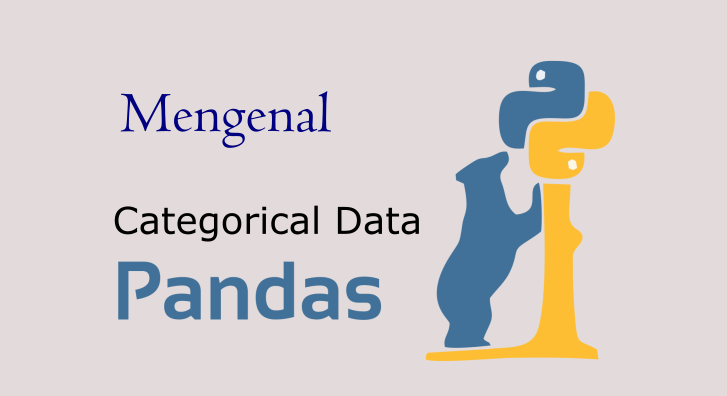


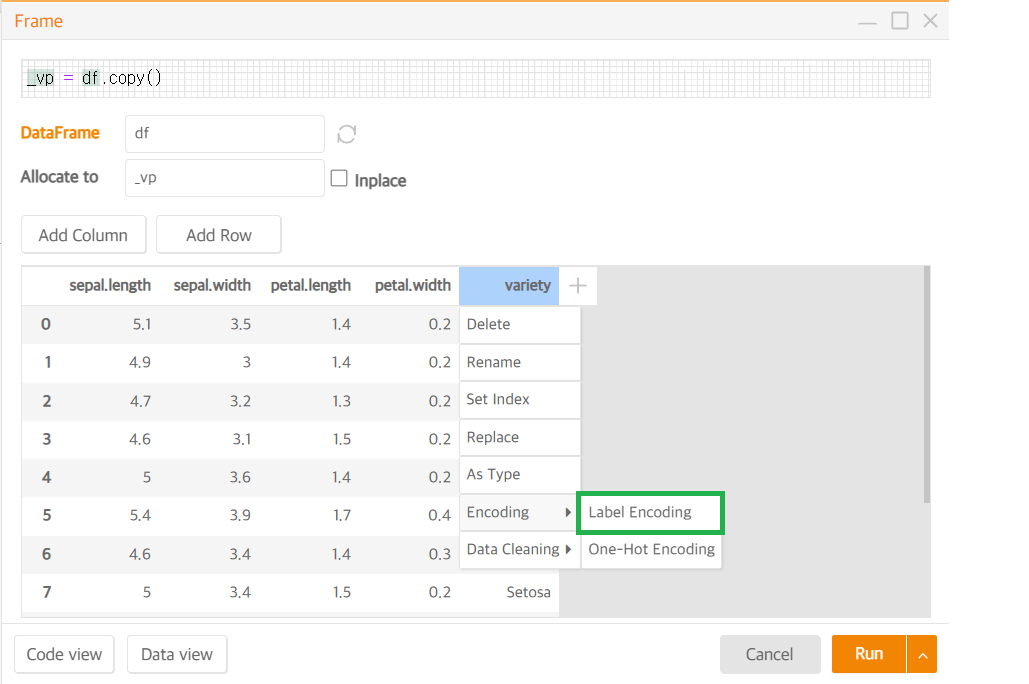


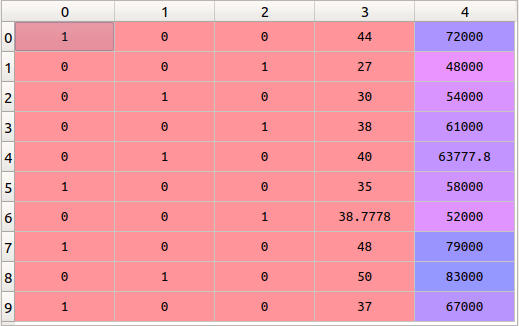



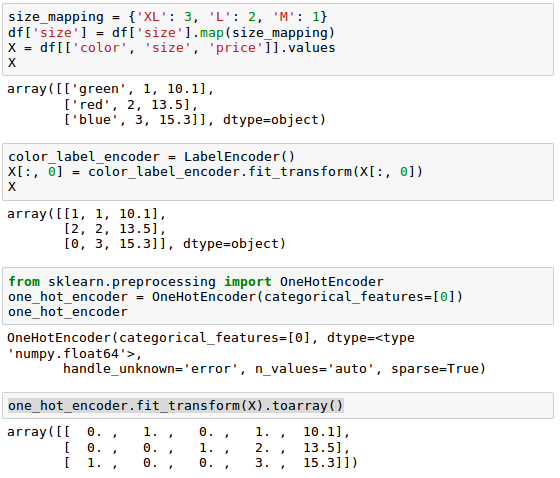














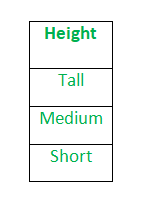

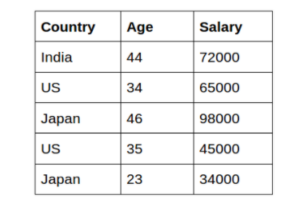
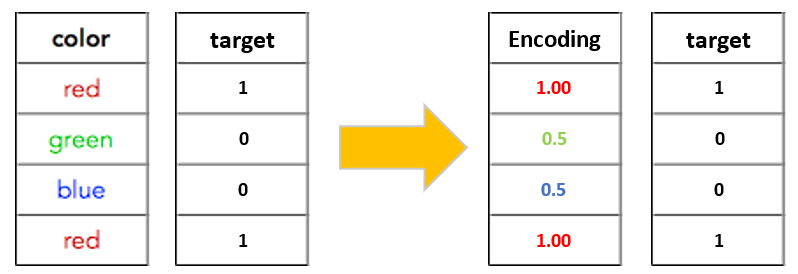
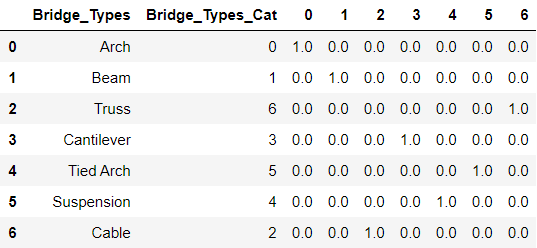

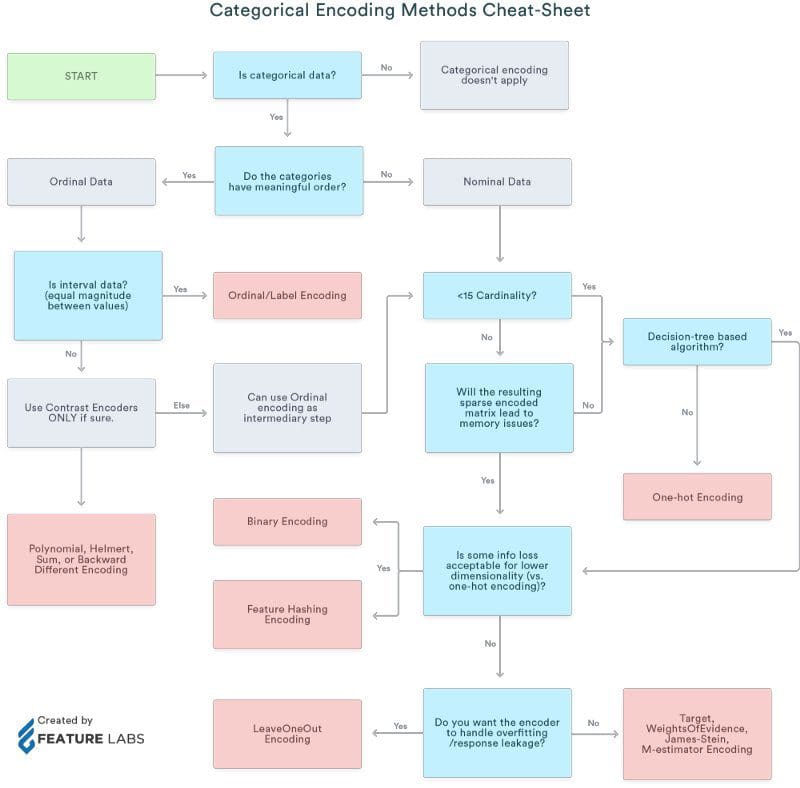

Post a Comment for "41 label encoding in python"